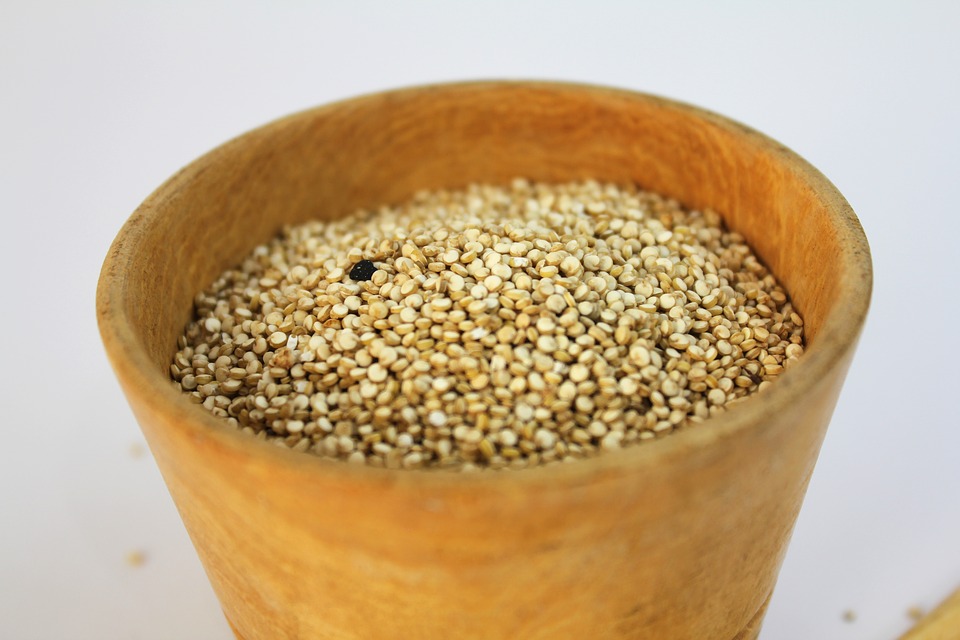
Ancient grains are a group of grains and pseudocereals (seeds that are consumed like grains) that have remained mostly unchanged for thousands of years. They’re dietary staples in many parts of the world, such as China, India, Africa, and the Middle East. Today, ancient grains are becoming more popular in Western countries.
That’s because they tend to be less processed and pack more vitamins, minerals, and fiber than more widespread grains like corn, rice, and modern wheat. In addition, studies have linked ancient grain consumption to health benefits, such as lower heart disease risk, better blood sugar control, and improved digestion.
Here are 6 healthy ancient grains you should be eating.
Amaranth
Amaranth is a nutritious, gluten-free grain that has been cultivated for more than 8,000 years. One cup (246 grams) of cooked amaranth contains:
- Calories: 251
- Carbs: 46 grams
- Protein: 9 grams
- Fat: 4 grams
- Fiber: 5 grams — 20% of the Daily Value (DV)
- Manganese: 91% of the DV
- Magnesium: 38% of the DV
- Iron: 29% of the DV
Thanks to its impressive nutrient composition, amaranth has been linked to numerous benefits, including decreased heart disease risk and inflammation. For example, an animal study found that a diet high in amaranth significantly reduced total cholesterol while raising HDL (good) cholesterol levels, compared to diets high in other grains. Amaranth can be easily used in place of rice, couscous, and quinoa. Alternatively, you can add amaranth to soups or stews to add bulk and thickness.
Millet
While best known as an ingredient in birdseed, millet is a nutritious, ancient pseudocereal considered a staple throughout China, India, Africa, Ethiopia, and Nigeria. One cup (174 grams) of cooked millet boasts:
- Calories: 174
- Carbs: 41 grams
- Protein: 6 grams
- Fat: 2 grams
- Fiber: 2 grams — 8% of the DV
- Manganese: 21% of the DV
- Magnesium: 19% of the DV
- Thiamine (vitamin B1): 15% of the DV
Millet contains a variety of nutrients linked to lower inflammation, reduced heart disease risk, and improved blood sugar control. For example, a study in 105 people with type 2 diabetes found that replacing rice with millet in a meal reduced post-meal blood sugar levels by 27%. Millet is versatile and gluten-free. It can be enjoyed as a hot breakfast cereal or in place of other grains like rice, couscous, and quinoa.
Khorasan wheat (kamut)
Khorasan wheat, also known as kamut, is a high-fiber, nutrient-dense grain that is linked to health benefits. One cup (172 grams) of cooked kamut offers:
- Calories: 227
- Carbs: 48 grams
- Protein: 10 grams
- Fat: 1 gram
- Fiber: 7 grams — 30% of the DV
- Selenium: 100% of the DV
- Zinc: 29% of the DV
- Niacin (vitamin B3): 25% of the DV
Kamut may be especially beneficial for reducing blood sugar levels and heart disease risk factors like LDL (bad) cholesterol. A 4-week study in 22 people found that a kamut-based diet suppressed hormones that promote inflammation and reduced total cholesterol by 4%, LDL (bad) cholesterol by 8%, and blood sugar levels by 4%, compared to a semi-whole-grain diet.
This grain contains gluten, which makes it unsuitable for people with celiac disease, non-celiac gluten sensitivity, or wheat allergies. Kamut has a chewy, nutty texture with grains two to three times the size of wheat grains. It’s an excellent addition to soups, stews, casseroles, and summer salads.
Sorghum
Sorghum is the fifth most consumed grain worldwide and a great source of nutrients. Per 3.5 ounces (100 grams), uncooked sorghum provides:
- Calories: 329
- Carbs: 72 grams
- Protein: 11 grams
- Fat: 3 grams
- Fiber: 7 grams — 27% of the DV
- Manganese: 70% of the DV
- Magnesium: 39% of the DV
- Copper: 32% of the DV
- Selenium: 22% of the DV
Sorghum is not only high in nutrients but also but also a good source of powerful polyphenol plant compounds, including anthocyanins and phenolic acids, which function as antioxidants inside your body. Antioxidants neutralize potentially harmful molecules called free radicals, which can cause cellular damage and increase disease risk when they accumulate in your body.
Unlike many other grains, sorghum is naturally gluten-free and can be easily ground into flour for gluten-free baking. Its mild flavor makes it very versatile.
Teff
Teff is the world’s smallest grain, at approximately 0.7–1% the size of a wheat kernel. Per 3.5 ounces (100 grams), uncooked teff contains:
- Calories: 367
- Carbs: 73 grams
- Protein: 13.3 grams
- Fat: 2 grams
- Fiber: 8 grams — 32% of the DV
- Manganese: 402% of the DV
- Copper: 90% of the DV
- Vitamin C: 98% of the DV
- Magnesium: 44% of the DV
- Iron: 42% of the DV
- Phosphorus: 34% of the DV
- Zinc: 33% of the DV
Although teff grains are tiny, they’re packed with important nutrients, such as iron and magnesium. They are also one of the few grains that boast vitamin C, a nutrient vital for immune and bone health. In Ethiopia, conditions like iron deficiency anemia are quite rare, possibly due to this nation’s high consumption of teff grains.
For example, a study in 592 pregnant Ethiopian women found that eating teff daily was linked to a significantly lower risk of anemia than eating teff less frequently.
Freekeh
Freekeh is a staple in Middle Eastern cuisine. Made from green durum wheat, it packs a variety of nutrients and powerful carotenoid compounds. Per 3.5 ounces (100 grams), uncooked freekeh offers:
- Calories: 325
- Carbs: 65 grams
- Protein: 20 grams
- Fat: 2.5 grams
- Fiber: 10 grams — 40% of the DV
- Iron: 20% of the DV
In particular, freekeh is a good source of the carotenoids lutein and zeaxanthin. A higher intake of these compounds has been linked to a lower risk of degenerative eye disorders, such as cataracts and age-related macular degeneration (AMD). As freekeh contains gluten, people with celiac disease and other gluten-related conditions should avoid it.
Freekeh has an earthy, nutty taste, with a chewy texture like that of brown rice. As a versatile grain, it makes an excellent addition to soups, stews, casseroles, and summer salads.

























